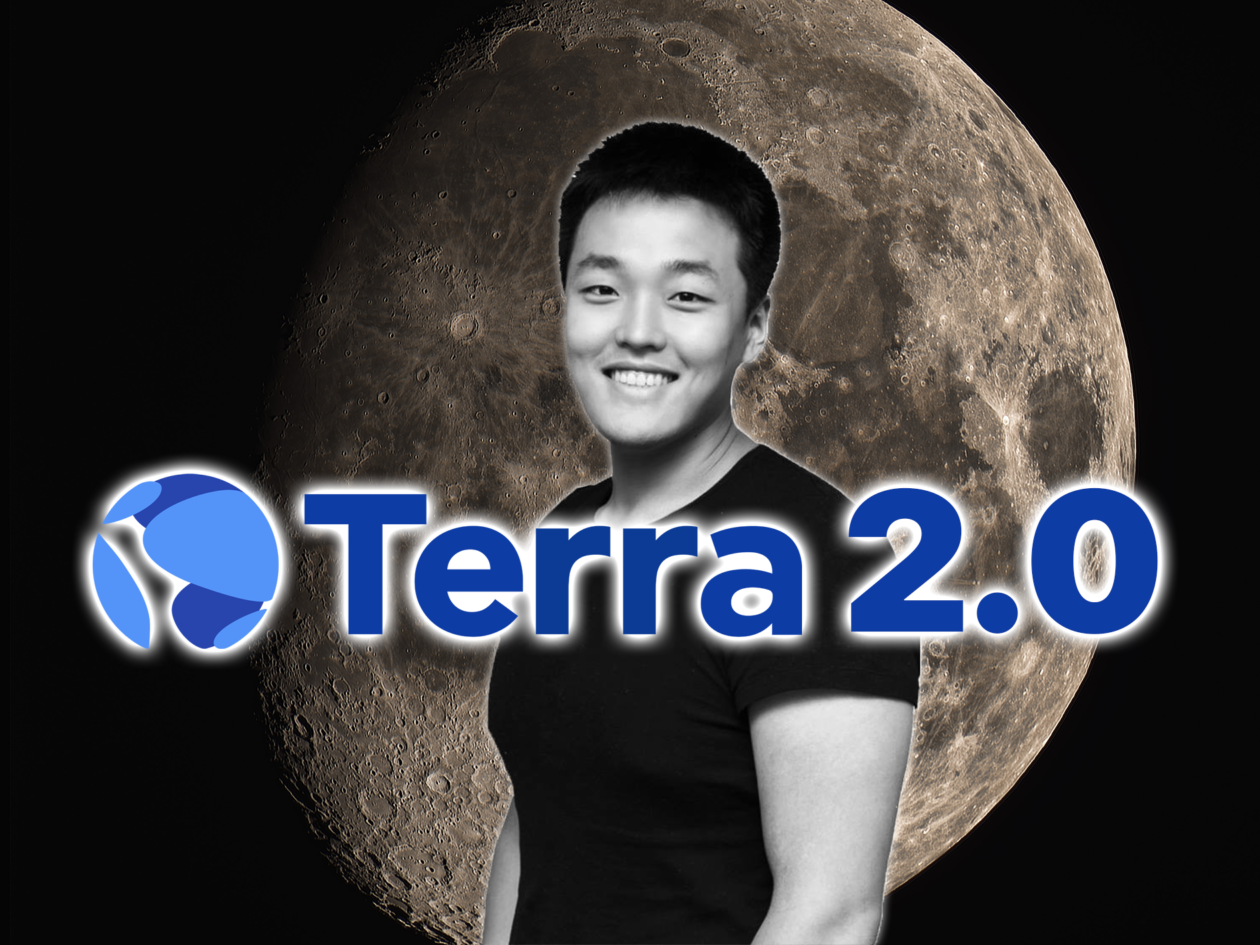The inability to make Terra investors whole is likely to undermine Terraform Labs PTE Ltd.’s latest proposal to undo the damage from a run on TerraUSD (UST), the algorithmic stablecoin project backed by the Singapore-based firm, experts told Forkast.
As part of Terraform Labs chief executive officer Do Kwon’s proposal to create a new blockchain on the Terra network without the algorithmic stablecoin, the old Terra and Luna will be called Terra Classic (USTC) and Luna Classic (LUNC) respectively. Kwon promised to airdrop 1 billion new LUNA tokens to existing holders of UST.
The new blockchain’s native staking token, LUNA, will be airdropped across LUNC stakers, LUNC holders, residual UST holders, and essential app developers of Terra Classic. The distribution of the new tokens distributed will be determined by the types of tokens, quantity, and the amount of time they were held on the Terra Classic chain before and after the “attack,” the proposal said.
Once bitten
“As long as the last developer is writing code on Terra, I will be holding it together,” Kwon said on Twitter, repeatedly assuring his commitment to rebuild the network and Terra community.
“As a community, we said we would rise from the ashes,” the verified Twitter handle of the Terra community said. “Tomorrow, one of the most decentralized and community-owned blockchains ever will launch as a result.”
But that is easier said than done, experts that Forkast spoke to said.
See related article: Knock, knock Do Kwon, investors have quite a lot of questions for you
For starters, the proposal itself was delayed by a day to May 28. And the abandonment of the previous blockchain may be seen by some as an acceptance of failure, said Sandbank.io’s Paik Hoon-jong.
“[Making a new chain] means the project acknowledges complete failure,” Paik told Forkast. “The history of the chain guarantees the decentralization or resistance to censorship of a blockchain — to erase this clean and starting new is like a company that’s gone bankrupt,” the cofounder and chief operating officer (COO) of DA Ground Co., Ltd. that operates the Seoul-based digital asset banking service Sandbank said. “In blockchain, history is trust.”
Others were more forgiving.
Kevin Ahn, an expert on decentralized finance (DeFi) in South Korea, does not think the previous Terra blockchain was a Ponzi scheme as widely alleged. “As far as I know, Terra’s algorithm was working fine according to the code,” Ahn told Forkast in an interview.
The drop in prices for old USTC and LUNC were likely caused by an “unexpected panic selling” rather than a run-on-the-bank or some illegal schemes with algorithmic stablecoins in general still undergoing experimentation, Ahn added.
The promise
The latest proposal attempts to restore some trust by promising to partly compensate investors, prioritizing holders of small wallets.
Investors with 10,000 or less of the old tokens before the “attack” will receive 30% of the Terra 2.0 token or LUNA via an airdrop, a Terra community website showed. Another 70% will be vested over two years with a six-month cliff. This would cover 99.8% of LUNC owners while only representing 6.5% of total LUNC pre-attack, the developers said.
Investors owning less than 1 million LUNC before the “attack” will have a one-year cliff with a two-year vesting period. while those with more will have a similar cliff with a four-year vesting period.
See related article: Terra, LUNA vote ends in favor of Do Kwon’s new chain proposal
Holders of aUST before the attack will receive 10% of the new tokens, the developers said. aUST is the stablecoin deposited in Terra’s DeFi service, Anchor Protocol, that promised users a 19.4% yield for staking their UST.
On Friday, the Terra governance system gave a 99.4% approval to ‘burn’ about 1.38 billion USTC, or about 11% of the total stablecoin’s supply. Terra will then bridge 371 million cross-chain USTC from Ethereum to Terra which will then be burned by Terraform Labs.
Still a big boys club?
Though the actual governance vote passed with 65.5% of the respondents in the affirmative, Paik said it was lopsided with validators and crypto whales (holders of wallet addresses that hold a significant amount of cryptocurrency) carrying more voice than the majority of Terra wallet owners.
The validators’ need to be compensated quickly for their losses by selling the new tokens and exit may have prompted their vote over the long-term prospects of the ecosystem, Paik said. “It’s hard to see it as the birth of a new, value-producing project,” he added.
If that were true, it would be at odds with the general practice where majority shareholders in a company are expected to vote in the common interests of all investors, although exceptions to the rule are not entirely uncommon.
Pioneers take arrows
The proposal didn’t help assuage critics who suggested that Terra’s attempt to develop an algorithmic stablecoin with a peg to the U.S. dollar without recourse to the actual greenback was flawed to begin with.
“The less there is backing it, the more you should be prepared to take the risk of this thing blowing up in your face,” the International Monetary Fund’s Kristalina Georgieva told delegates at the World Economic Forum’s annual meeting in Davos.
However, she urged investors to not let their trust in blockchain technology and cryptocurrencies waiver due to this incident.
“I would beg you not to pull out of the importance of this world,” Georgieva said in comments reported by Bloomberg News. “It offers us all faster service, much lower costs, and more inclusion, but only if we separate apples from oranges and bananas,” she said, adding that the responsibility for protecting investors lay with regulators.
See related article: Kerner at Blockchain Coinvestors says Terra was a Ponzi strategy
U.S. Federal Reserve Vice Chair Lael Brainard said that new regulation is necessary following the recent collapse of USTC and LUNC. She went a step further to say that stablecoins and digital currencies issued and backed by central banks (CBDCs) could co-exist.
“[CBDCs] could coexist with and be complementary to stablecoins and commercial bank money by providing a safe central bank liability in the digital financial ecosystem, much like cash currently coexists with commercial bank money,” Brainard said.
The crash certainly helped speed up attempts to regulate the sector in countries like South Korea, where about 280,000 investors held about 70 billion LUNC, according to estimates provided by the country’s Financial Services Commission (FSC) chairman Koh Seung-beom.
The prosecutor’s office in Seoul is investigating the project to determine if it was a Ponzi scheme after a lawsuit was filed against Do Kwon alleging fraud.
Regulators elsewhere were glad to be off the hook.
Reserve Bank of India (RBI) governor Shaktikanta Das told a local news station that the central bank was right in calling for a shunning of the sector rather than give it any form of legitimacy through regulation.
If crypto had been regulated in India leading to the recent disaster revolving around the Terra ecosystem, investors would have questioned the effectiveness of the law, Das said in comments reported by the Indian affiliate of the CNBC television network.
The smell test
Still some are of the opinion that as long as the viability of any initiative is based on new investors coming in and paying off the old, it fits the definition of a so-called pyramid or “Ponzi Scheme.”
The scheme is named after the Italian businessman Charles Ponzi who in the 1920s promised investors a 50% return within a few months for what he claimed was an investment in international mail coupons, according to an investor education website run by the Securities and Exchange Commission (SEC). Ponzi allegedly led his victims to believe that profits were coming from legitimate business activity even though fresh investors were the source of funds.
“I have to say that Terra [LUNC] has the characteristics of a Ponzi scheme, especially after the launch of Anchor [Protocol],” said Babel Finance’s Robbie Liu. “Heavily subsidized yield on Anchor is the only reliable source of demand for UST,” the head of research at the Hong Kong-based wholesale crypto financial services provider added.
The roughly 20% annualized rate promised is indicative of a highly speculative investment and akin to a “tactic not unlike the numerous Ponzi schemes throughout history,” Liu told Forkast.
Liu’s comments echoed that of the IMF’s Georgieva.
“If a stablecoin is backed with assets, one to one, it is stable,” Georgieva said in comments reported by CNBC. “When it is not backed with assets, but it is promised to deliver (a) 20% return, it’s a pyramid,” she added.
For Kwon to win back trust, any of his new business proposals should have “sustainable prospects and a speculation-free business model,” Sandbank’s Paik told Forkast. “He needs to come back with a new project that is fundamentally different from Terra,” Paik said.





